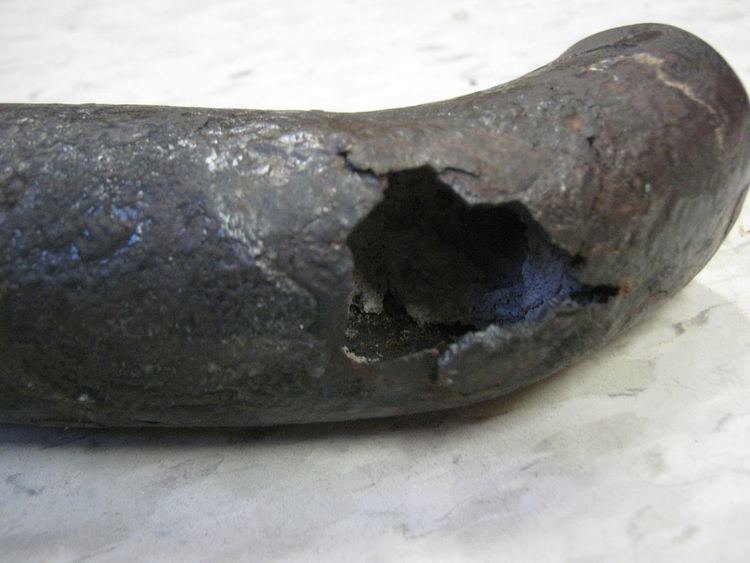 | ||
Caustic embrittlement is the phenomenon in which the material of a boiler becomes brittle due to the accumulation of caustic substances.
Contents
Cause
As water evaporates in the boiler, the concentration of sodium carbonate increases in the boiler. Sodium carbonate is used in softening of water by lime soda process, due to this some sodium carbonate maybe left behind in the water. As the concentration of sodium carbonate increases, it undergoes hydrolysis to form sodium hydroxide.
The presence of sodium hydroxide makes the water alkaline. This alkaline water enters minute cracks present in the inner walls of the boiler by capillary action. Inside the cracks, the water evaporates and amount of hydroxide keeps increasing progressively. This sodium hydroxide attacks the surrounding material and the dissolves the iron of the boiler as sodium ferrate. This causes embrittlement of boiler parts like rivets, bends and joints, which are under stress.
Prevention
This can be prevented by using sodium phosphate instead of sodium carbonate as softening reagents. Adding tannin or lignin to boiler water blocks the hair-line cracks and prevents infiltration of NaOH into these areas. Adding Na2SO4 to boiler water also blocks the hair-line cracks.
